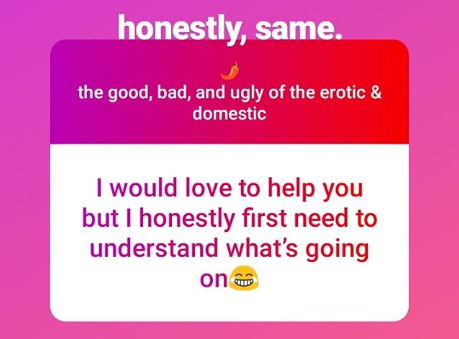Lately, I have been spending time thinking about how to draw lines to distinguish offensive remarks and symbols as hate speech or in contexts of art or activism. It is a subject that test the limits of free speech which I cannot delve deep enough in a single blog post. However, I will try to illustrate the dilemma via several examples. This distinction is especially difficult in digital media, since it is detached from the physical world and the intentions of expressions can very often be not clear enough. Also, it’s completely different to experience an artwork in a museum or view it on a digital platform. In case of the latter, the context is oftentimes lacking.
Lea Lublin: Is woman…?
Feminist artist Lea Lublin gathered participants and threw a banner into the Seine River. On the banner, a series of questions starting with “Is woman…” were listed. Some of the questions were: “Is woman a sexual victim?”, “Is woman an inferior being?”, “Is woman a private property?”. [Due to copyright restrictions I cannot add an image of the banner used in the performance art, so for the full list I refer you to MoMA’s website: https://www.moma.org/collection/works/160310] A few questions include misogynistic slurs, however, it is crystal clear that the words are “self-referential” and are not targeted at anyone. The point of the art piece and usage of the words is to make us think and to potentially raise awareness. On the other hand, this performance piece dates back to 1978, and (the copy of) the banner is held in a museum which has, not total, but a lot more authority over the meaning than the social media platforms have on their content. In our digital age of ambiguity, where it can sometimes be challenging to grasp what is intended to be a sarcasm, what is a meme and what is an opinion, things are a lot more complicated.
The Oversight Board
I want to move on with a few examples of social media posts from the year 2021. Examples I picked are from the cases the Oversight Board of Meta evaluated in 2021. Oversight Board is an independent body funded by Meta (formerly Facebook) which makes non-binding decisions on freedom of expression and advises Meta on the handling of removal of content or suspension of account on Meta’s products (Facebook, Instagram). So, it basically functions as a (although non-binding) Supreme Court of social media. Users can appeal to the Board if they disagree with the removal of their post. The Board is comprised of a diverse group of people from around the world with different backgrounds, such as former politicians, scholars and activist.
Hate Speech, Art & Empowerment
In 2021, an Indigenous North American artist shared a Facebook post of their artwork of a woven belt dedicated to the mass grave of children discovered in Canada. The artwork was titled “Kill the Indian/Save the Man” which was mentioned in the caption of the post, and led to the subsequent removal of the post from Facebook by the automated system and the confirmation of the removal by human reviewer twice. The owner of the post appealed to the Oversight Board, which, as you can expect, overturned the decision of removal on the grounds that it was an artwork that aimed to raise awareness and educate. And the phrase “Kill the Indian” was clearly not an example of hate speech in this specific context.
Another case example is a post from South Africa about racial social and economic dynamics in post-Apartheid South Africa. The post was shared by an account which had a profile picture portraying a black person. In the post, socio-economic and racial inequalities were discussed and that white people in South Africa had more control of the economy and had more power even in the post-Apartheid era. The user claimed that some black people were pandering to white people and were being “deputy-white”, “sophisticated slave” and went on so far to the extent of using highly offensive racial slurs that I will not mention here. Facebook removed the post, and the user appealed to the Oversight Board. The Board decided that Facebook made the right decision to remove the post since these remarks were not intended to raise awareness in any way and was actually targeted at certain groups of people. In this case it didn’t matter if the owner of the words was from within the community, because the words and phrases were not used in a self-referential or empowering way.
Distinguishing if a statement on social media constitutes hate speech can be tricky especially when art or politics (or both) interfere and complicate the ways of interpretation even more. Oversight Board has many rulings on similar cases from gay men using derogatory language for self-empowerment in Morocco to the complex topic of Zwarte Piet in the Netherlands. Around the world, for many people, social media is the only platform that people can express themselves relatively freely. So, companies like Meta should ensure everyone’s right to free speech while protecting us from hate speech. Context matters.
References
- Lea Lublin, Interrogations sur la Femme, 1978. https://www.moma.org/collection/works/160310
- Oversight Board decision on Indigenious North American art form Wampum belt: https://oversightboard.com/decision/FB-L1LANIA7/
- Oversight Board decision on South Africa slurs: https://oversightboard.com/decision/FB-TYE2766G/
- Oversight Board decision on Reclaiming Arabic words: https://oversightboard.com/decision/IG-2PJ00L4T/
- Oversight Board decision on Zwarte Piet: https://oversightboard.com/decision/FB-S6NRTDAJ/




Recent Comments